|
History Notes Chapter 2, Page 1 of 1 The Inter-War Years: Looking For A Mission |
|||||||||||||||||||
After World War I, the U.S. dismantled much of its armed forces as the nation became more and more isolationist. The Army’s air arm was not exempt from these cuts. Luckily, the 91st was not one of the units that were deactivated. It did undergo numerous name changes but its basic observation and reconnaissance missions stayed. The 91st Squadron arrived back in the United States on Long Island, New York and skipped its way across the U.S. until it arrived at Rockwell Field, near present day San Diego, California. The unit was assigned duties consisting of patrolling the southwestern U.S./Mexican border between California and Arizona. |
|||||||||||||||||||
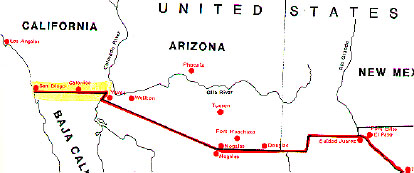 |
|||||||||||||||||||
|
Patrol area in U.S. Southwest in 1919-1921 (1) |
|||||||||||||||||||
While assigned to border patrol in Southern California, the 91st served under Maj. “Hap” Arnold who would later become the Chief of Staff for the Army Air Corps during World War II and the only Air Force general to receive five-star rank.
|
|||||||||||||||||||
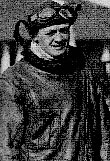 |
|||||||||||||||||||
|
Henry H. Arnold |
|||||||||||||||||||
| In July 1920, the fire hazard in Oregon and California became critical and the governor asked the Air Service for assistance in patrolling the National Forests. As the newly appointed Air Service Officer for the Western Department, Major Arnold established patrols from Eugene and Medford, Oregon. The men and planes came from the 91st Corps Observation Squadron at Rockwell Field. (2) Later, other patrol routes were established over the large expanse of national forests then established throughout California. | |||||||||||||||||||
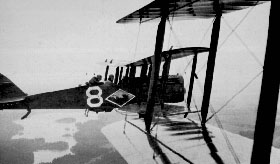 |
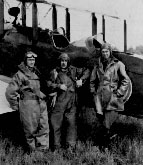 |
||||||||||||||||||
|
relaxing after another difficult flight. |
|||||||||||||||||||
|
flying over the California, Oregon and Washington National Forests. |
|||||||||||||||||||
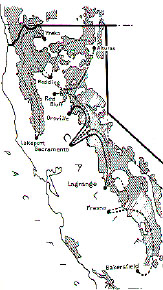 |
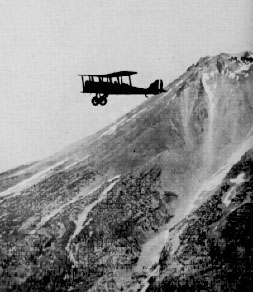 |
||||||||||||||||||
|
|
|||||||||||||||||||
|
|
|||||||||||||||||||
| In 1921, the 91st moved to Crissy Field, California--the location of the present day Presidio in the San Francisco Bay area. Here, the unit flew up and down the California coast and worked a variety of different missions, such as: flew with various Army infantry and Calvary units; spotted fire (control) for field and coast artillery; towed targets for antiaircraft units; made maps and photographs for all branches of the Army and the Coast Geodetic Survey; and conducted fire patrols in the national forests. (Editors note: If you would like to learn more about the DH-4, click on this URL to the USAF Museum, WPAFB, and use your back button to return to this page. |
|||||||||||||||||||
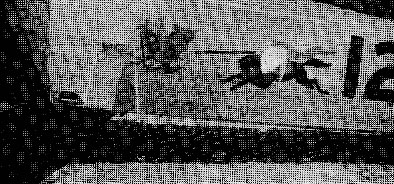 |
|||||||||||||||||||
| It was here in 1924, that the “unofficial” Demon Chaser emblem painted on the side of its aircraft during World War I and afterwards, was “officially” approved by the Secretary of War. | |||||||||||||||||||
|
|
|||||||||||||||||||
| Joining in a 114 plane group in April 1930, the 91st Observation Squadron participated in what “represented the maximum in concentration of air force units in the Continental limits of the United States.” (3) This is an indication of how small the United States air forces had shrunk after World War I. |
|||||||||||||||||||
In 1936--after more than fifteen years at Crissy Field, the 91st was moved to Gray Field, near Fort Lewis, Washington. Crissy’s location at the Presidio of San Francisco was not an ideal place for flying due to its location beside San Francisco Bay. Heavy fog cover frequently made flying hazardous but the unit flew in and out as best it could without halting operations. What finally drove the 91st from Crissy Field was the construction of the Golden Gate Bridge. (4) At Gray Field, the 91st continued to fly the same types of missions with the Army’s IX Corp. Editor's Note: We have received a selection of pictures of the |
|||||||||||||||||||
|
Attributions 1. Aviation in the U.S. Army 1919-1939, Maurer Maurer, The Albert F. Simpson Historical Research Center, Maxwell AFB, Alabama, 1978, page 100. 2. Aviation in the U.S. Army 1919-1939, Maurer Maurer, The Albert F. Simpson Historical Research Center, Maxwell AFB, Alabama, 1978, page 134. 3. Ibid, 245. 4. Ibid, 371. |
|||||||||||||||||||
|
End of Page 1 of 1, Chapter 2 go to Chapter 3 Cover — Table of Contents — Introduction Chapters — 1 — 2 — 3 — 4 — 5 — 6 — 7 |
|||||||||||||||||||